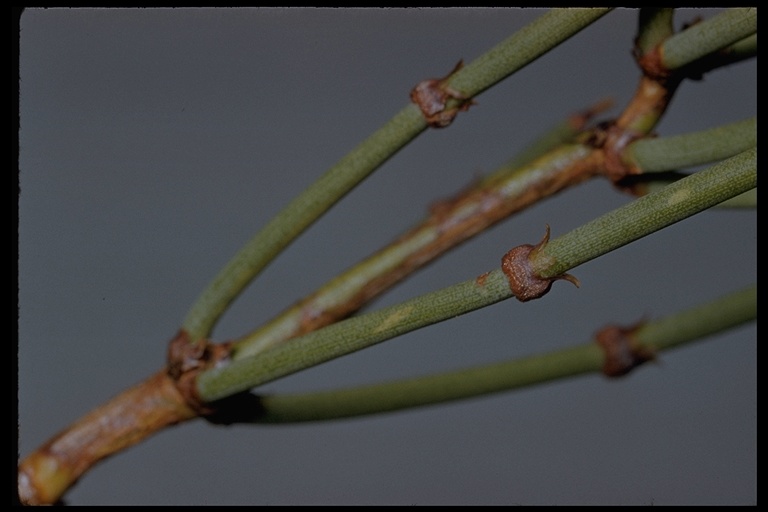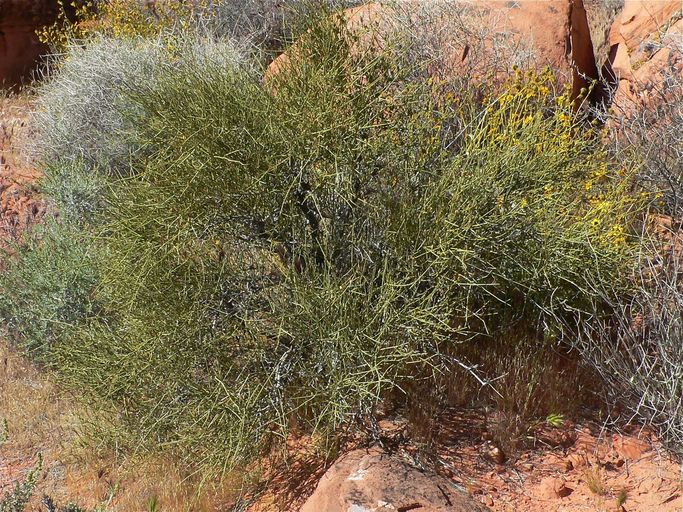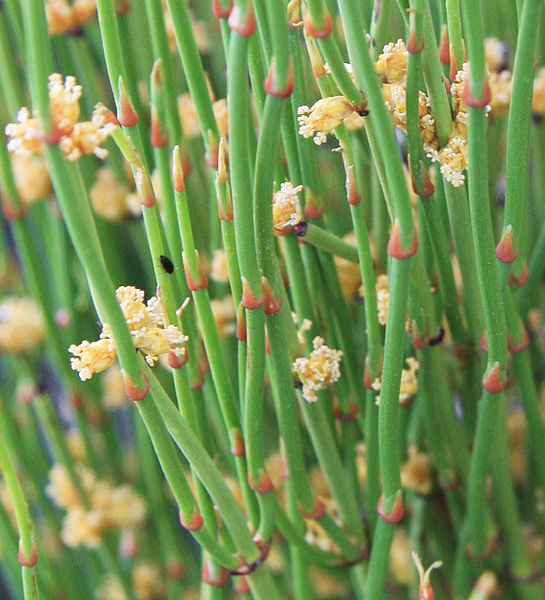Adaptation
Ephedra viridis has several adaptations to help it
better survive in the habitat it grows in. One of the
biggest adaptations it has involves how it obtains nutrients.
In most land plants, nutrients are obtained via photosynthesis
that occurs in the leaves. Since the leaves in Ephedra
viridis are so small and do not have the necessary surface
area to successfully undergo this process, the plant has adapted
so that photosynthesis occurs in the stems. For more
information on this process, refer to the
Nutrition Page.
leaves in Ephedra
viridis are so small and do not have the necessary surface
area to successfully undergo this process, the plant has adapted
so that photosynthesis occurs in the stems. For more
information on this process, refer to the
Nutrition Page.
Along with adapting to better support itself from a food and energy standpoint, Ephedra viridis also has adaptations to better support itself in its environment. For example, Ephedra viridis is a plant that is capable of undergoing secondary growth, or growth in girth. Since the stems in the plant get thicker and wider, the plant itself becomes stronger and is able to withstand more things like wind and predators. This feature, along with other adaptations help Ephedra viridis survive natural disaters that may occur in its environment. Studies have shown that in some cases Ephedra viridis is able to survive wildfires. This adaptation is extremely important because the area where this plant grows is usually very dry and wildfires are not uncommon. If the plant was not adapted to the circumstance, every time there is a wildfire the entire population would be wiped out. This would not be a good thing for Ephedra viridis because the reproductive cycle of the plant is long and complex (see Reproduction). Another important adaptation for Ephedra viridis is that it can prevent erosion and restore destroyed vegetation. For more information on this, see the Surrounding Environment section on the Interactions Page.
You must be wondering how this plant gets all of the energy to be as cool as it is! To find out, go on to the Nutrition page, or you can go Home.

